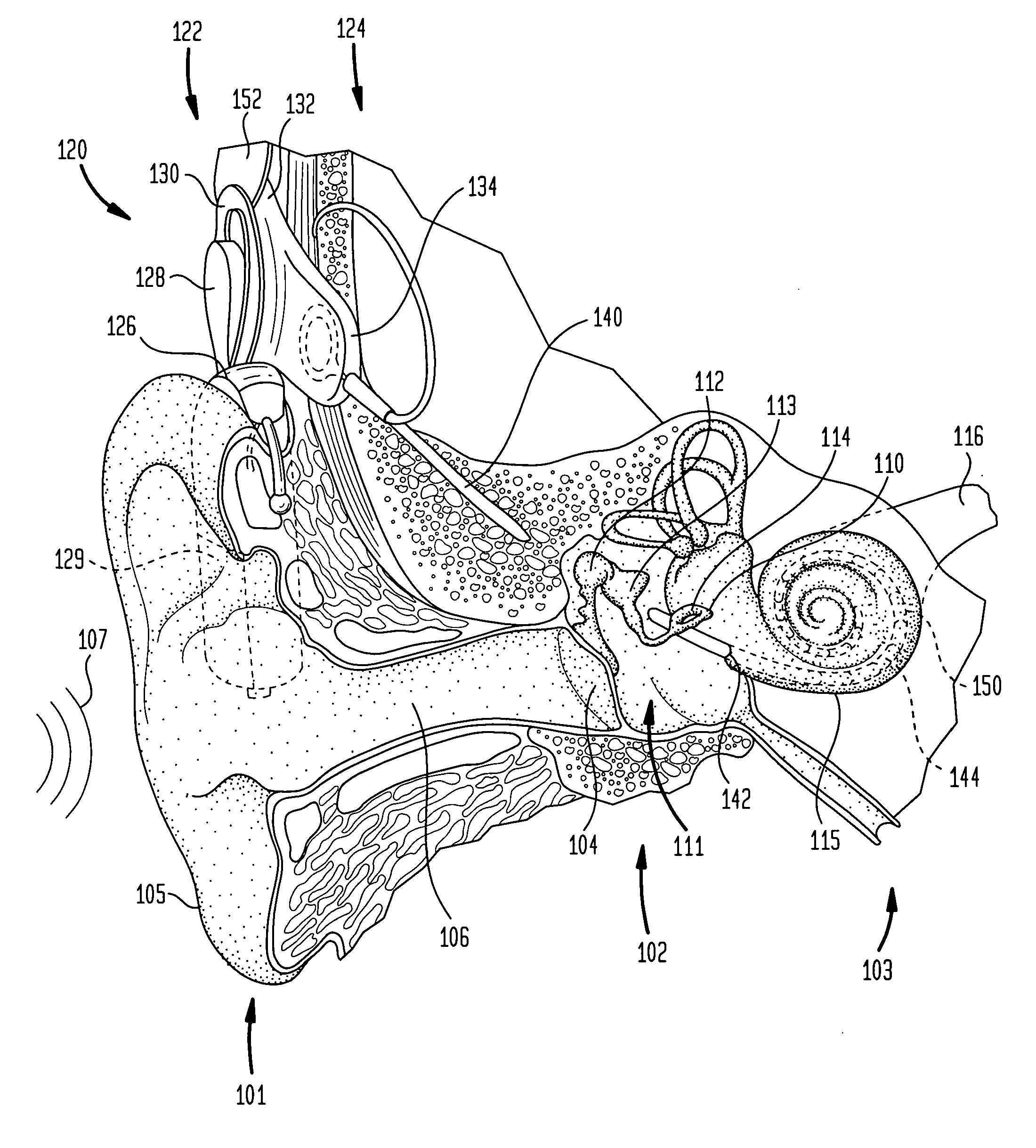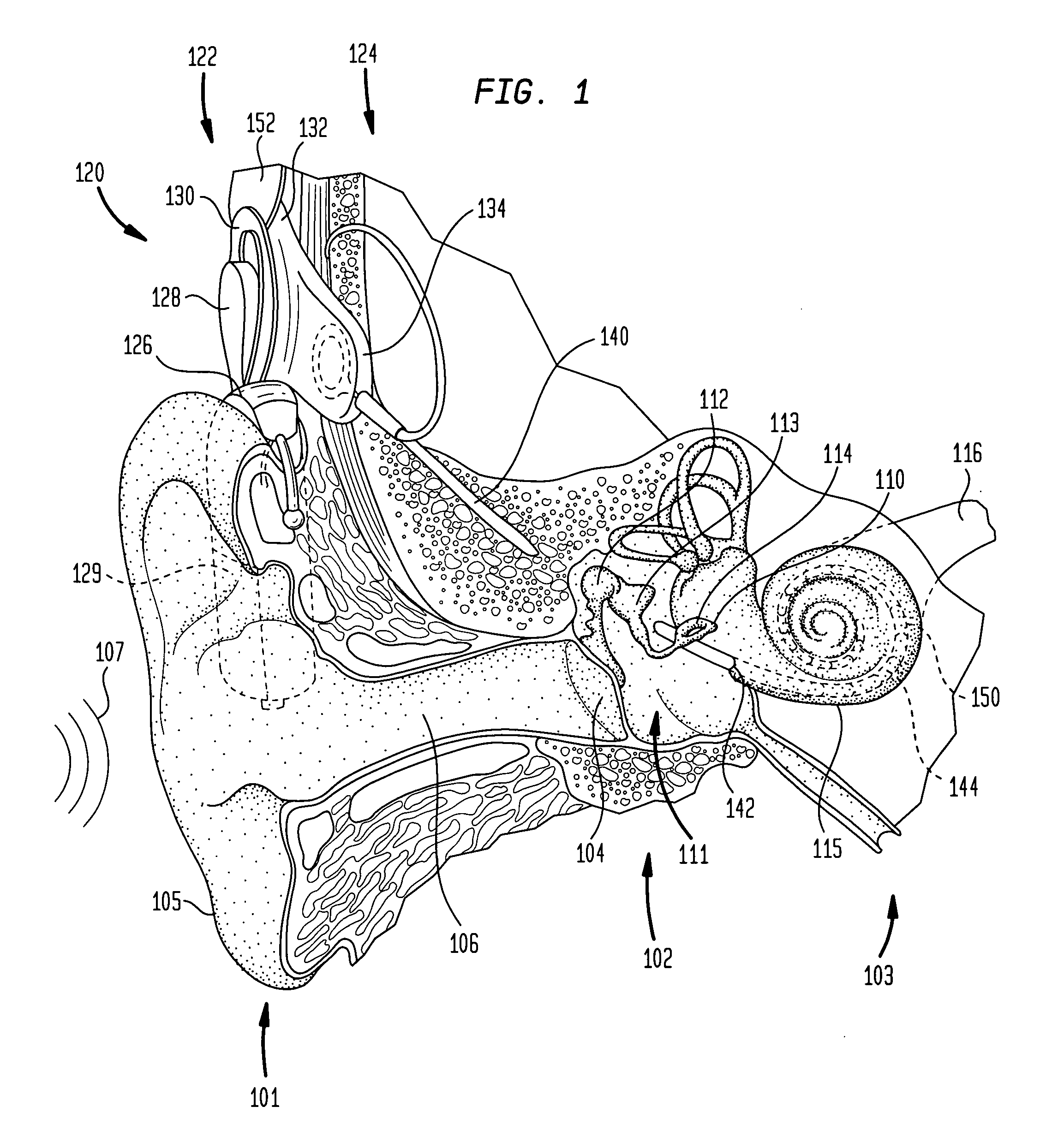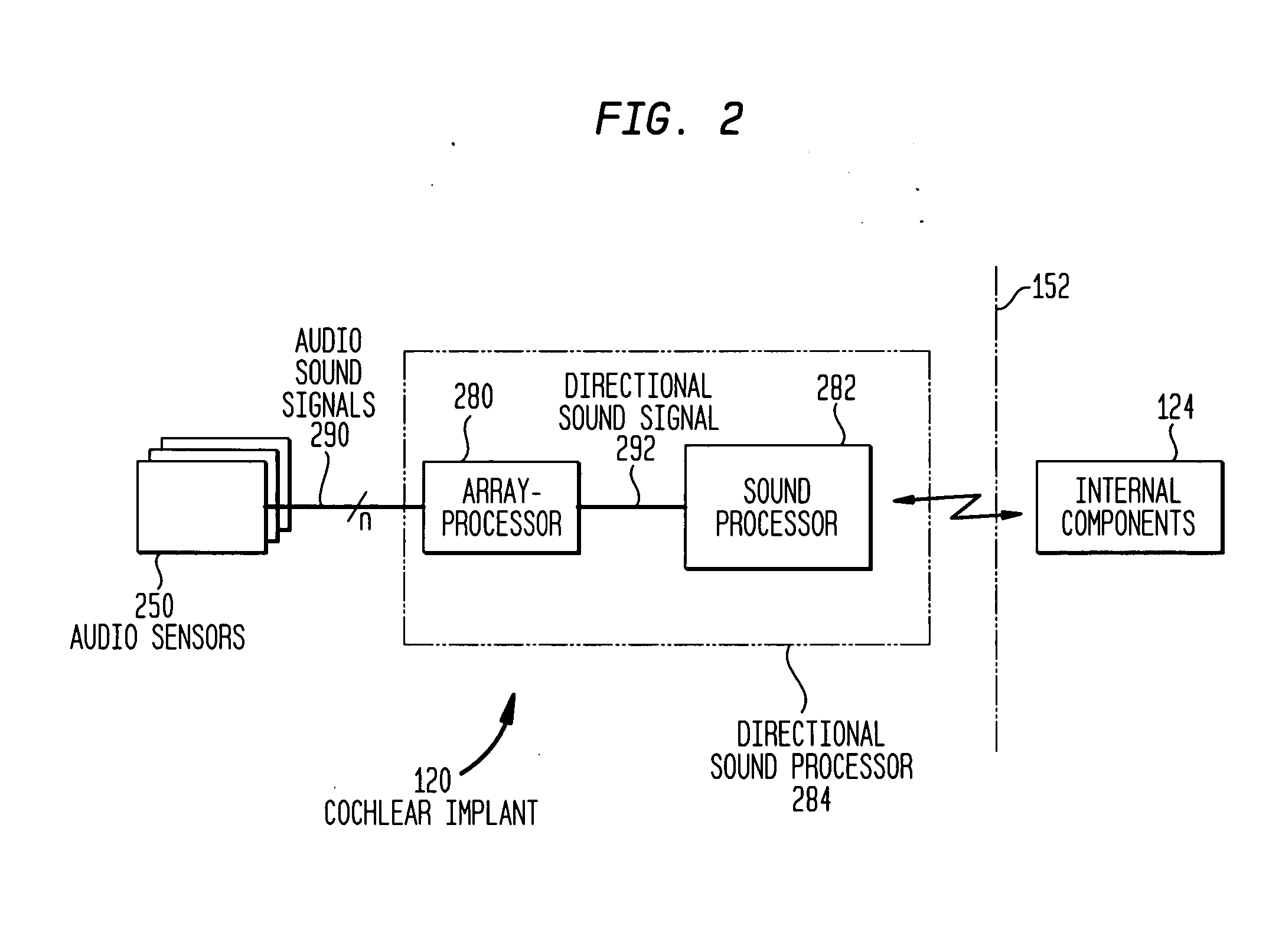Directional sound processing in a cochlear implant
a cochlea implant and directional sound technology, applied in the field of sound processing, can solve the problems of conductive hearing loss, impeded normal mechanical pathways which provide sound to hair cells in the cochlea, and profound deafness
- Summary
- Abstract
- Description
- Claims
- Application Information
AI Technical Summary
Benefits of technology
Problems solved by technology
Method used
Image
Examples
Embodiment Construction
[0024] Aspects of the present invention are generally directed to a cochlear implant implementing a directional sound processing system. A directionally-sensitive cochlear implant of the present invention comprises a plurality of audio sensors spatially-arranged to receive ambient sound. At least one audio sensor is disposed in one of the external components of the cochlear implant, while at least one other audio sensor is located elsewhere, such as in an external component other than the first component. Each audio sensor comprises at least one acoustical transducer such as a microphone.
[0025] Such cochlear implants also include an directional sound processor that processes sound received from a desired direction (“desired sounds”) and eliminates or attenuates sound received from other directions (“undesired sounds”). Embodiments of the directional sound processor comprise an array processor composed of one or more array-processing stages. Each array-processing stage generates a d...
PUM
 Login to View More
Login to View More Abstract
Description
Claims
Application Information
 Login to View More
Login to View More - R&D
- Intellectual Property
- Life Sciences
- Materials
- Tech Scout
- Unparalleled Data Quality
- Higher Quality Content
- 60% Fewer Hallucinations
Browse by: Latest US Patents, China's latest patents, Technical Efficacy Thesaurus, Application Domain, Technology Topic, Popular Technical Reports.
© 2025 PatSnap. All rights reserved.Legal|Privacy policy|Modern Slavery Act Transparency Statement|Sitemap|About US| Contact US: help@patsnap.com



